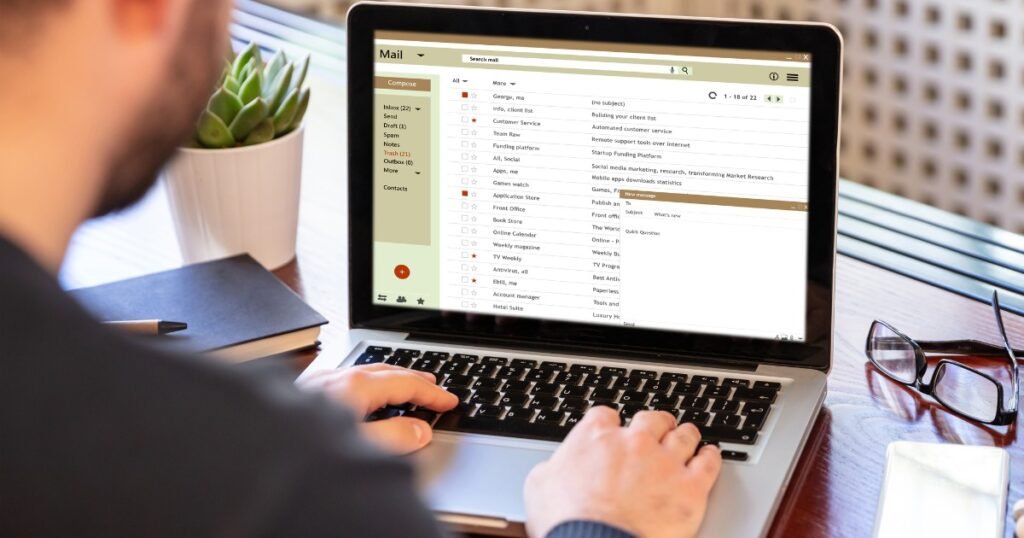Introduction
In the fast-paced world of digital marketing, email marketing remains one of the most powerful tools to engage, convert, and retain customers. With the rise of various marketing channels like social media and content marketing, the consistent value of email marketing is often underestimated. However, a well-crafted email marketing strategy, underpinned by a strong email list, can offer unrivaled benefits for businesses.
But how can you build and maintain a strong email list that drives conversions and promotes long-term engagement? In this guide, we’ll dive deep into email marketing best practices, focusing on proven strategies to build a high-quality list and keep it active and healthy.
1. Understanding the Value of Email Marketing
Before jumping into the intricacies of building an email list, it’s important to understand why email marketing is still a dominant force in the digital marketing landscape. Here’s why:
- Direct Communication: Emails allow you to directly communicate with your audience, delivering personalized messages that align with their interests.
- Customer Retention: Email is a great way to nurture existing relationships with customers, offering relevant updates, promotions, and value-driven content.
- Automation Capabilities: Email marketing tools allow for automation, segmentation, and customization at scale, making it easy to target different customer groups based on their preferences.
2. Building a High-Quality Email List
Building a high-quality email list is the foundation of a successful email marketing campaign. Here are some of the most effective strategies for growing your list:
a. Offer Value to Attract Subscribers
People won’t just sign up for your emails without a compelling reason. You need to offer them something of value, such as:
- Free eBooks, Whitepapers, or Guides: Provide a high-value resource that addresses a pain point or educates your audience.
- Discounts and Coupons: Offer special discounts or exclusive promotions for signing up.
- Webinars and Free Courses: Invite potential subscribers to participate in free webinars or mini-courses that offer insight into a particular topic.
- Contests and Giveaways: Everyone loves a freebie! Use contests and giveaways to attract a wider audience.
b. Optimize Your Signup Forms
A great offer is only as good as the ease of subscribing. Make sure your sign-up forms are easy to find and fill out. Here’s how:
- Place Forms in Strategic Locations: Ensure that signup forms are visible across your website—on your homepage, blog, and pop-ups.
- Keep It Simple: Don’t ask for too much information upfront. Often, a name and email address are all you need to start.
- Use Incentives: Encourage sign-ups by highlighting the value of subscribing (e.g., “Sign up and receive 20% off your first purchase!”).
c. Use Lead Magnets
Lead magnets are essential for converting website visitors into email subscribers. A lead magnet is a piece of valuable content or an offer given in exchange for an email address. Here are a few ideas for creating effective lead magnets:
- Cheat Sheets: Provide a quick, actionable reference guide that’s relevant to your audience’s interests.
- Checklists: Offer downloadable checklists that help subscribers achieve a specific goal.
- Exclusive Content: Offer access to exclusive blog posts, video tutorials, or other content available only to subscribers.
d. Leverage Social Media
Social media platforms are excellent tools for promoting your email list. Here are some tactics:
- Promote Sign-Ups on Your Social Profiles: Add a sign-up link to your social media bios and promote your newsletter in posts.
- Run Ads: Use Facebook or Instagram ads to promote your lead magnet and direct users to your signup page.
- Host Contests: Encourage social media followers to join your email list by entering a contest or sweepstake.
3. Best Practices for Maintaining a Strong Email List

Building an email list is only half the battle; maintaining that list is equally important. A clean, engaged email list will yield better results than a large, uninterested audience. Here’s how to maintain your list for optimal performance:
a. Practice Proper List Hygiene
To keep your email list healthy, you need to remove inactive or invalid email addresses. This practice is known as list hygiene, and it’s essential for improving deliverability rates. Here’s what you can do:
- Clean Your List Regularly: Use tools to automatically remove hard bounces (invalid email addresses) and unsubscribe people who haven’t engaged with your emails for an extended period.
- Use Double Opt-In: A double opt-in ensures that only users who are truly interested in your content subscribe to your list. It reduces the number of invalid or fake sign-ups.
- Re-Engagement Campaigns: Before removing inactive subscribers, send them a re-engagement email to see if they’re still interested in staying on your list.
b. Segment Your Audience
List segmentation is key to sending relevant, personalized content that resonates with different segments of your audience. Here’s how to do it:
- Demographic Segmentation: Break down your audience by age, gender, location, and more.
- Behavioral Segmentation: Segment your list based on past purchase behavior, browsing history, or engagement with previous emails.
- Interest-Based Segmentation: Allow subscribers to choose which topics they’re interested in during sign-up so you can send them targeted content.
c. Send Regular Emails, but Don’t Overwhelm
Consistency is important in email marketing, but bombarding your subscribers with too many emails can lead to unsubscribes. Follow these guidelines:
- Set Expectations: Let your subscribers know how often they’ll hear from you. If they’re expecting weekly emails, don’t suddenly switch to daily.
- Be Consistent: Maintain a regular email schedule, whether it’s weekly, bi-weekly, or monthly.
- Quality Over Quantity: Ensure that every email you send offers value—whether that’s educational content, promotions, or insights.
4. Crafting Engaging and Personalized Emails

Once you have a strong list, your focus should shift toward creating engaging content that resonates with your subscribers. Here’s how to do it:
a. Write Compelling Subject Lines
Your subject line is the first thing your subscribers see, and it determines whether they’ll open your email. Follow these best practices:
- Keep It Short and Sweet: Aim for 6-10 words to ensure the subject line is visible, even on mobile devices.
- Create a Sense of Urgency: Use phrases like “Limited Time Offer” or “Last Chance” to encourage immediate action.
- Personalize Where Possible: Use the subscriber’s name or reference their past interactions for a more personalized approach.
b. Optimize for Mobile Devices
More than half of all emails are opened on mobile devices, so it’s crucial to ensure your emails are mobile-friendly. Here’s what you can do:
- Use Responsive Design: Make sure your email layout adapts to different screen sizes.
- Keep Your Text Readable: Use larger fonts and concise paragraphs to improve readability on smaller screens.
- Ensure Quick Load Times: Avoid large images or complex designs that can slow down loading times.
c. Include Clear Calls-to-Action (CTAs)
Every email should have a clear call-to-action (CTA) that tells your subscribers what to do next. Here are some tips for crafting effective CTAs:
- Use Action-Oriented Language: Start your CTA with a strong verb, like “Download,” “Buy,” or “Register.”
- Make It Stand Out: Use contrasting colors or buttons to ensure your CTA is easily noticeable.
- Limit the Number of CTAs: Avoid overwhelming your readers with multiple actions. Focus on one or two main CTAs per email.
5. Analyzing and Optimizing Your Email Campaigns
To make sure your email marketing strategy is successful, you need to consistently analyze and optimize your campaigns. Here’s how:
a. Monitor Key Metrics
The success of your email campaigns depends on several key performance indicators (KPIs). The most important ones include:
- Open Rates: The percentage of people who opened your email. A low open rate may indicate poor subject lines or delivery times.
- Click-Through Rates (CTR): The percentage of people who clicked on a link in your email. A low CTR could mean your content or CTAs need improvement.
- Bounce Rates: The percentage of emails that couldn’t be delivered. High bounce rates may signal issues with your email list.
- Unsubscribe Rates: The percentage of people who opt out of your email list. If this number is high, your content may not be meeting your audience’s expectations.
b. A/B Testing
A/B testing allows you to experiment with different elements of your email campaigns to see what resonates best with your audience. Here are a few areas you can test:
- Subject Lines: Try different styles of subject lines to see which ones generate higher open rates.
- Send Times: Experiment with sending your emails at different times and days to find when your audience is most active.
- Content Layout: Test various email layouts, from text-heavy designs to more visual approaches, to see what drives more clicks.
c. Continuously Optimize
Email marketing is a constantly evolving process, so it’s important to review your performance and make adjustments. Regularly evaluate your KPIs, experiment with new strategies, and refine your approach to keep improving.
Conclusion
Building and maintaining a strong email list requires strategy, effort.

